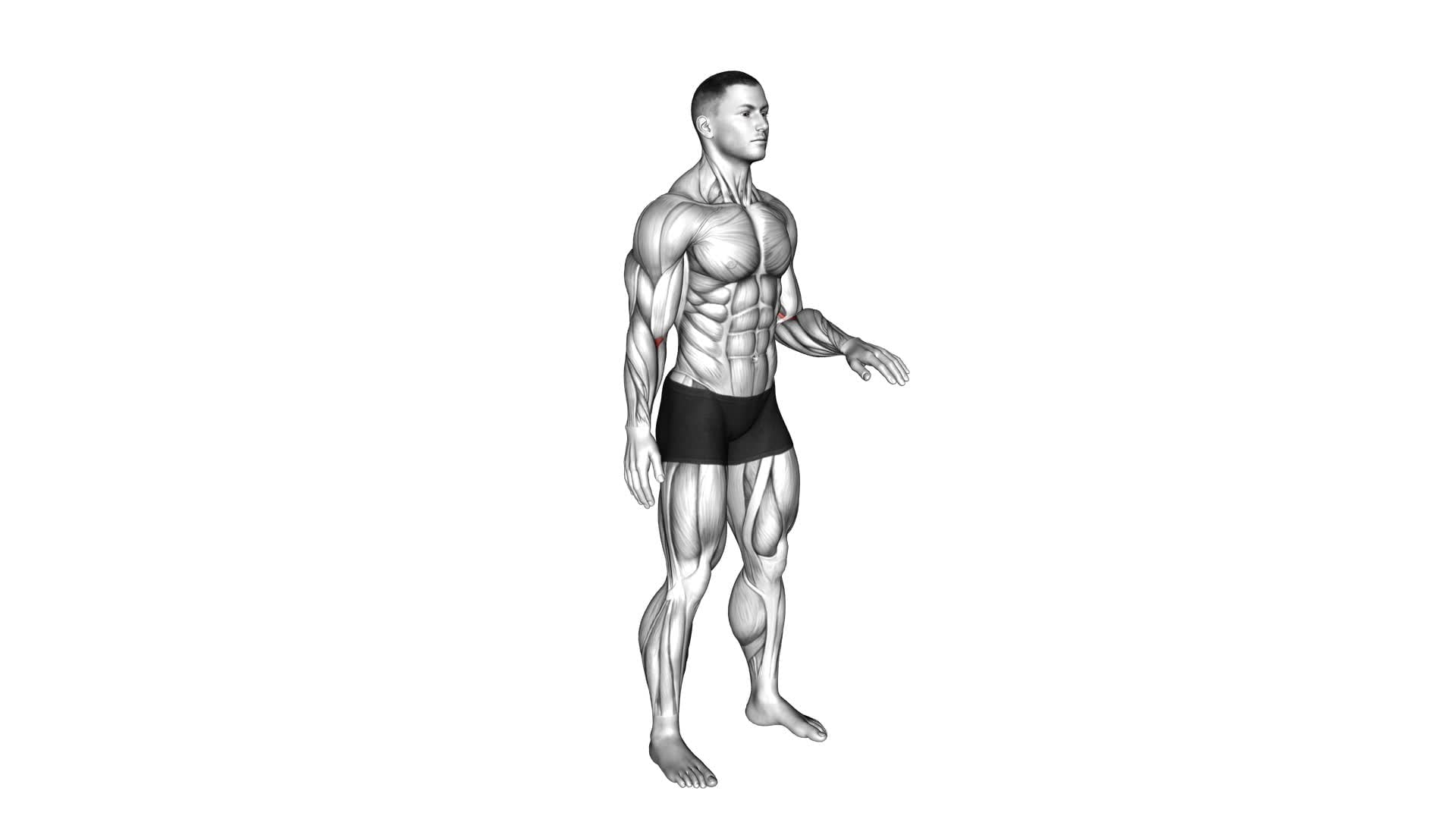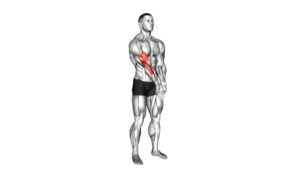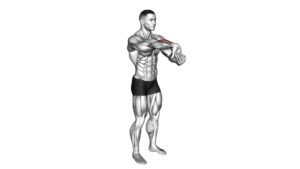Forearm – Pronation – Video Exercise Guide & Tips

Looking to improve your forearm strength and flexibility? Our video exercise guide and tips will help you master forearm pronation.
Watch This Exercise Video
Learn the benefits of these exercises, proper form and technique, and the essential equipment you'll need.
Whether you're a beginner or advanced, our guide has you covered.
Get ready to strengthen those forearms and achieve your fitness goals with our comprehensive video exercise guide and tips.
Let's get started!
Key Takeaways
- Forearm pronation exercises can reduce the risk of injuries like tennis elbow and carpal tunnel syndrome.
- These exercises strengthen the muscles and tendons in the forearms, improving grip strength.
- Incorporating forearm pronation exercises into a regular workout routine can enhance performance in activities that rely on grip.
- Using proper form and technique, as well as gradually increasing weight and incorporating variations, can optimize the effectiveness of these exercises.
Benefits of Forearm Pronation Exercises
To maximize the benefits of forearm pronation exercises, you should incorporate them into your regular workout routine. These exercises offer several advantages, including injury prevention and improved grip strength.
By engaging in forearm pronation exercises, you can reduce the risk of injuries such as tennis elbow and carpal tunnel syndrome. These exercises strengthen the muscles and tendons in your forearms, making them more resilient and less prone to strain.
Additionally, incorporating forearm pronation exercises into your routine can enhance your grip strength. This is particularly beneficial for athletes who rely on their grip, such as climbers and weightlifters. By strengthening the muscles involved in forearm pronation, you can improve your ability to grasp and hold objects securely. This increased grip strength can have a positive impact on various activities, from everyday tasks to sports performance.
Now that you understand the benefits of forearm pronation exercises, let's move on to the next section and explore the proper form and technique for performing these exercises.
Proper Form and Technique for Forearm Pronation
Mastering the proper form and technique for forearm pronation is essential for maximizing the effectiveness of this exercise. To ensure you're performing forearm pronation correctly, it's important to avoid common mistakes that can hinder your progress.
One common mistake is using too much weight, which can lead to improper form and increase the risk of injury. Start with a lighter weight and gradually increase as you become more comfortable and confident in your technique.
Another mistake to avoid is relying solely on your wrist to rotate the weight. Instead, focus on engaging your forearm muscles and using them to initiate the movement. This will help target the intended muscles and prevent strain on your wrist.
To progress in forearm pronation exercises, you can increase the weight gradually over time. This will challenge your muscles and promote growth and strength development. Additionally, incorporating variations such as using a pronation board or a pronation bar can provide different angles and intensities to your workout.
By mastering the proper form and technique, and avoiding common mistakes, you can optimize your forearm pronation exercises for maximum results.
Now, let's move on to the next section where we'll discuss the essential equipment needed for forearm pronation exercises.
Essential Equipment for Forearm Pronation Exercises
When it comes to forearm pronation exercises, one essential piece of equipment is a pronation board. This specialized board is designed to target the muscles in your forearm and improve your pronation range of motion. Here are three sub-lists to help you visualize the essential equipment for forearm pronation exercises:
- Pronation Board: A pronation board is a flat, rectangular board with a pivot point in the center. It allows you to place your forearm on the board and rotate it in a controlled manner. The board is typically made of sturdy materials like wood or metal to withstand the pressure and movement.
- Hand Weights: Hand weights are another essential equipment for forearm pronation exercises. They provide resistance and help strengthen the muscles involved in pronation. You can start with lighter weights and gradually increase the resistance as you progress.
- Resistance Bands: Resistance bands are versatile equipment that can be used for various forearm exercises, including pronation. They provide adjustable resistance and can be easily incorporated into your workout routine. By attaching the band to a stable object and holding the other end, you can perform various pronation exercises to target different muscles.
These essential pieces of equipment will help you effectively perform forearm pronation exercises and improve your overall forearm strength and flexibility. Remember to start with lighter weights and gradually increase the intensity to avoid injury and maximize your progress.
Beginner-friendly Forearm Pronation Exercises
If you're a beginner looking to improve your forearm pronation, try incorporating these beginner-friendly exercises into your workout routine.
Forearm pronation stretches are a great way to start building strength and flexibility in your forearms. One common mistake in forearm pronation exercises is using too much weight or resistance too soon. It's important to start with lighter weights or resistance bands and gradually increase as your strength improves. Another common mistake isn't maintaining proper form. Keep your wrist straight and your forearm parallel to the ground throughout the exercise to engage the correct muscles.
One beginner-friendly exercise for forearm pronation is the wrist rotation. Hold a light dumbbell or a resistance band in your hand with your palm facing down. Slowly rotate your wrist to bring your palm up towards the ceiling, then rotate it back down. Repeat this movement for a set number of reps.
Another exercise is the supine forearm pronation stretch. Lie on your back with your arm extended straight out in front of you. Use your other hand to gently pull your fingers back towards your body, feeling a stretch in your forearm. Hold for a few seconds, then release and repeat on the other arm.
Now that you've learned some beginner-friendly forearm pronation exercises, it's time to move on to more advanced exercises to further challenge your muscles.
Advanced Forearm Pronation Exercises
Now let's take your forearm pronation to the next level with advanced exercises. To further strengthen and improve your forearm pronation technique, try incorporating these advanced forearm pronation techniques:
- Resistance Band Pronation: Attach a resistance band to a stationary object and hold the other end with your palm facing down. Slowly rotate your forearm outward against the resistance of the band, focusing on engaging the muscles in your forearm.
- Weighted Pronation: Hold a dumbbell or a weighted object in your hand with your palm facing down. Slowly rotate your forearm outward, keeping your wrist straight and maintaining control throughout the movement. Increase the weight gradually as you progress.
- Pronation with Wrist Flexion: Hold a weighted object in your hand and, while keeping your wrist straight, rotate your forearm outward. At the same time, flex your wrist, bringing the weight closer to your forearm. This exercise targets both your forearm pronators and wrist flexors.
When performing these advanced exercises, it's important to avoid common mistakes in forearm pronation exercises, such as using excessive weight or jerky movements. Focus on maintaining proper form and control throughout each exercise to maximize the benefits and minimize the risk of injury.
Keep challenging yourself with these advanced techniques to continue improving your forearm pronation strength and flexibility.
Frequently Asked Questions
How Often Should I Perform Forearm Pronation Exercises for Optimal Results?
For optimal results, it's important to perform forearm pronation exercises with the right frequency. These exercises not only promote muscle growth but also play a crucial role in injury prevention.
To maximize the benefits, it's recommended to incorporate forearm pronation exercises into your regular workout routine. However, it's important to listen to your body and avoid overtraining.
Consulting with a fitness professional can help determine the ideal frequency for your specific needs and goals.
Are There Any Alternative Exercises That Target the Same Muscles as Forearm Pronation?
Looking for alternative exercises that target the same muscles as forearm pronation? You're in luck! There are several options available.
Incorporating exercises like wrist curls, reverse curls, and hammer curls into your routine can help strengthen the muscles involved in forearm pronation. These exercises focus on the flexor and extensor muscles in your forearms, providing a great alternative to pronation exercises.
Can Forearm Pronation Exercises Help Improve Grip Strength?
Forearm pronation exercises can definitely help improve your grip strength. By targeting the muscles in your forearm, these exercises not only enhance your ability to rotate your forearm but also strengthen the muscles responsible for grip.
Incorporating forearm pronation exercises into your routine can provide several benefits, such as increased wrist stability and improved performance in activities that require a strong grip.
To get the best results, focus on exercises like dumbbell pronation curls and wrist roller rotations.
Are There Any Specific Warm-Up Exercises Recommended Before Performing Forearm Pronation Exercises?
Before performing forearm pronation exercises, it's recommended to do specific warm-up exercises. These warm-up exercises help prepare your muscles and joints for the movements involved in forearm pronation exercises.
They can include wrist rotations, finger stretches, and forearm stretches. By warming up properly, you can reduce the risk of injury and ensure that your muscles are ready for the workout.
Additionally, forearm pronation exercises have benefits such as improving grip strength and wrist stability.
Can Forearm Pronation Exercises Help Alleviate Symptoms of Carpal Tunnel Syndrome?
Forearm pronation exercises can be effective in alleviating symptoms of carpal tunnel syndrome. They help strengthen the muscles in your forearm, improving overall wrist function and reducing pressure on the median nerve.
However, it's important to note that exercises alone may not be enough to fully relieve symptoms. Wrist braces can also be beneficial in providing support and reducing strain on the wrist.
Additionally, practicing good ergonomics, such as maintaining proper posture and using ergonomic equipment, can help prevent carpal tunnel syndrome.
Conclusion
Incorporating forearm pronation exercises into your workout routine can provide numerous benefits. These include increased wrist and forearm strength and improved grip. By using proper form and technique, and utilizing the essential equipment, you can effectively target and engage the muscles involved in forearm pronation.
Whether you're a beginner or advanced, there are exercises suited for your fitness level. Start incorporating these exercises today to enhance your overall upper body strength and performance.

Author
Years ago, the spark of my life’s passion ignited in my mind the moment I stepped into the local gym for the first time. The inaugural bead of perspiration, the initial endeavor, the very first surge of endorphins, and a sense of pride that washed over me post-workout marked the beginning of my deep-seated interest in strength sports, fitness, and sports nutrition. This very curiosity blossomed rapidly into a profound fascination, propelling me to earn a Master’s degree in Physical Education from the Academy of Physical Education in Krakow, followed by a Sports Manager diploma from the Jagiellonian University. My journey of growth led me to gain more specialized qualifications, such as being a certified personal trainer with a focus on sports dietetics, a lifeguard, and an instructor for wellness and corrective gymnastics. Theoretical knowledge paired seamlessly with practical experience, reinforcing my belief that the transformation of individuals under my guidance was also a reflection of my personal growth. This belief holds true even today. Each day, I strive to push the boundaries and explore new realms. These realms gently elevate me to greater heights. The unique combination of passion for my field and the continuous quest for growth fuels my drive to break new ground.







